Physical Address
304 North Cardinal St.
Dorchester Center, MA 02124
Physical Address
304 North Cardinal St.
Dorchester Center, MA 02124
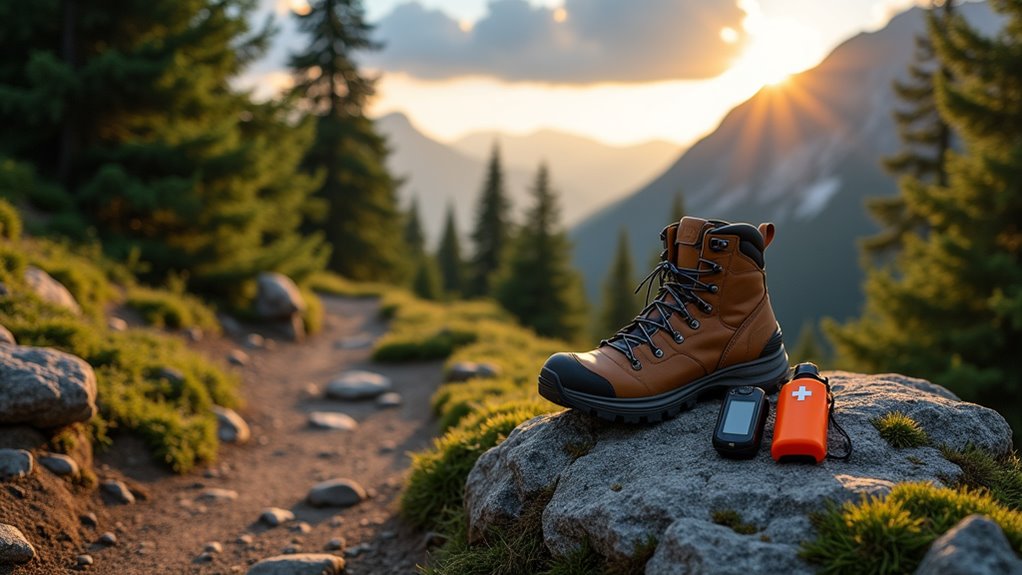
Outdoor adventures turn deadly when hikers ignore these 9 essential safety practices that separate prepared explorers from rescue statistics.
When was the last time you heard about a hiker who wished they’d been less prepared? Every year, search and rescue teams respond to thousands of preventable hiking emergencies—from dehydration in desert canyons to hypothermia on mountain peaks. You don’t need to become another statistic. The difference between a memorable adventure and a dangerous ordeal often comes down to nine critical safety practices that experienced hikers swear by, yet many newcomers overlook completely.
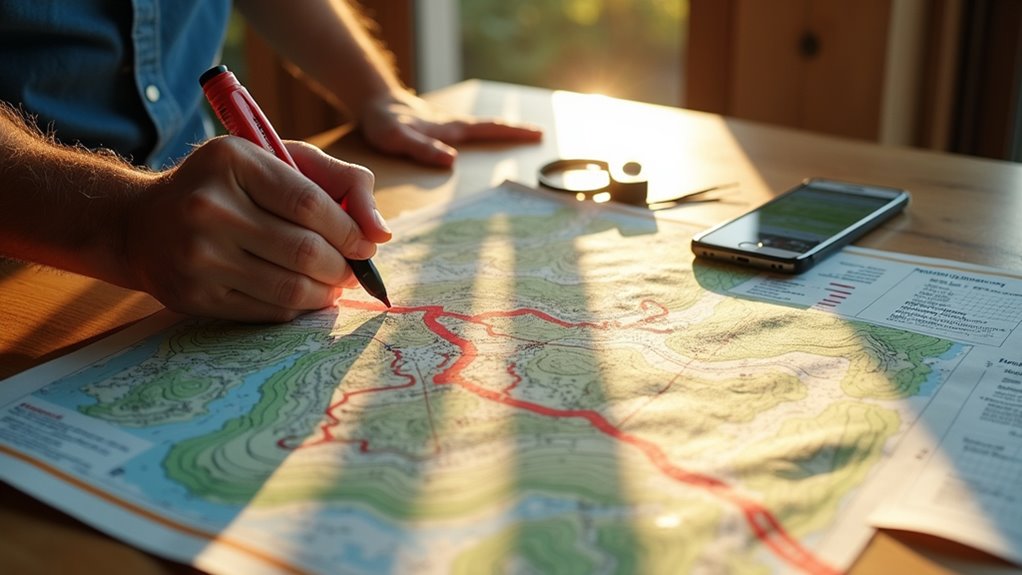
Why do so many hiking emergencies stem from poor planning? Because people underestimate nature’s unpredictability and overestimate their abilities.
Most hikers fail because they think they’re tougher than the trail and smarter than the storm.
You’ll dramatically reduce your risk by researching your chosen trail beforehand. Check weather forecasts, trail conditions, and difficulty ratings on apps like AllTrails or local park websites.
Always inform someone trustworthy about your specific route, departure time, and expected return. Don’t just say “I’m going hiking” – provide detailed information including trailhead location and backup plans. Text them when you’re starting and finishing.
Download offline maps to your phone since cell service often disappears in wilderness areas. Carry physical maps too – technology fails when you need it most.
If you’re running late, contact your emergency person immediately to prevent unnecessary search-and-rescue operations.
Consider planning a family camping trip that includes day hikes, as camping provides a safer base camp environment where children and inexperienced hikers can gradually build their outdoor skills.
Weather changes faster than your hiking pace, and getting caught unprepared can turn a pleasant day into a survival situation. Check multiple weather sources before heading out—local forecasts, mountain weather services, and radar apps all provide different insights. Pay special attention to wind speed, precipitation probability, and temperature drops at elevation.
Don’t just check the weather once; conditions shift throughout the day. Mountain weather is notoriously unpredictable, with afternoon thunderstorms common in many regions. If there’s a chance of severe weather, postpone your hike. Lightning kills more hikers than bears or snakes combined.
Set weather alerts on your phone for your hiking area. When in doubt, turn around early. You can always reschedule, but you can’t undo hypothermia or lightning strikes. For those planning more extreme adventures like glacier climbing, weather monitoring becomes even more critical as alpine conditions can change rapidly and pose additional risks beyond typical hiking scenarios.
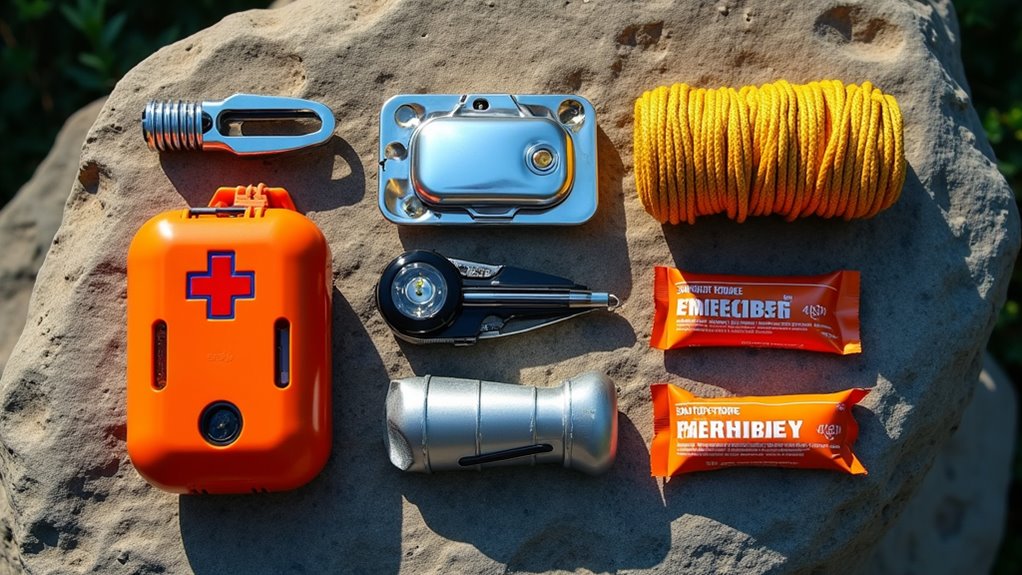
Even with perfect weather forecasts, nature throws curveballs that can quickly escalate minor inconveniences into serious emergencies. You’ll want to pack the “Ten Essentials” that experienced hikers swear by: navigation tools, sun protection, insulation, illumination, first-aid supplies, fire starter, repair kit, nutrition, hydration, and emergency shelter.
Your first-aid kit should include bandages, pain relievers, antiseptic wipes, and any personal medications. Pack a whistle for signaling help—three sharp blasts is the universal distress signal. Don’t forget a multi-tool, duct tape, and emergency blanket.
A headlamp beats a flashlight since it keeps your hands free.
Consider downloading offline maps to your phone and carrying a portable charger. These items might seem excessive for day hikes, but they’re literal lifesavers when things go sideways. When assembling your first aid kit, prioritize lightweight, versatile items that can address the most common hiking injuries and emergencies.
While your gear protects you from emergencies, what you wear determines your comfort and safety throughout the entire hike. Your clothing choices can mean the difference between an enjoyable adventure and a dangerous situation.
Choose moisture-wicking fabrics that keep sweat away from your skin, preventing hypothermia in cold conditions. Cotton kills in the backcountry—it stays wet and loses insulation properties when damp.
Layer your clothing system strategically:
Match your outfit to elevation changes and weather forecasts, not just starting conditions. These same principles apply when camping with toddlers, as proper layering helps maintain their body temperature during outdoor adventures.

Your body’s fuel and hydration needs on the trail far exceed what you’d require during typical daily activities. Pack more water than you think you’ll need—dehydration sneaks up quickly at altitude or in hot weather. Drink small sips regularly rather than waiting until you’re thirsty.
Bring calorie-dense snacks like nuts, dried fruit, or energy bars that won’t spoil. Your muscles burn through glycogen stores faster when climbing steep terrain, so eat something every hour to maintain steady energy levels.
Consider electrolyte tablets if you’re sweating heavily—plain water isn’t enough to replace lost sodium and potassium.
Watch for early warning signs like headaches, dizziness, or unusual fatigue. These often signal dehydration or low blood sugar before they become serious problems.
If you’re planning a water-based hiking adventure, research whether renting or buying a used boat makes more sense for accessing remote trailheads along lakes or rivers.
Getting lost on the trail ranks among hikers’ most dangerous scenarios, yet it’s entirely preventable with proper preparation and awareness. You’ll want to master basic navigation skills before venturing into unfamiliar territory.
Trail navigation mastery through proper preparation transforms one of hiking’s deadliest risks into an entirely avoidable concern.
Essential navigation practices include:
Don’t rely solely on smartphone apps since batteries die and signals fail. Practice using your compass at home first. If you do get disoriented, stop immediately and retrace your steps to the last familiar landmark. Consider bringing a lightweight hammock camping setup as it can provide emergency shelter if you need to stay put overnight while waiting for rescue or better weather conditions.
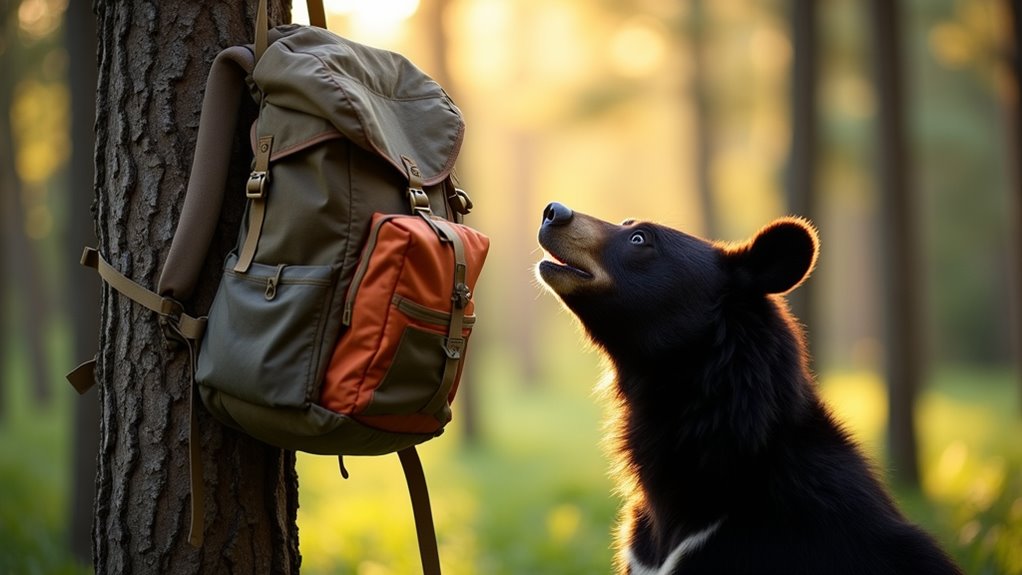
Since encounters with wildlife can quickly escalate from magical moments to dangerous situations, you’ll need solid strategies for coexisting safely with the animals that call the wilderness home.
Make noise while hiking to avoid surprising animals—most prefer avoiding humans too. If you spot wildlife, don’t approach or feed them. Keep your distance and slowly back away if they seem agitated.
Proper food storage prevents dangerous encounters entirely. Use bear canisters in bear country, hanging food at least 12 feet high and 4 feet from tree trunks elsewhere. Never leave food, toiletries, or scented items in your tent—these attract curious animals.
Store garbage with your food since it carries appealing odors. Clean cooking areas thoroughly and pack out everything you brought in.
For those planning extended wilderness stays, forest camping offers unique wildlife viewing opportunities but requires heightened awareness of animal behavior patterns and seasonal movements.
While summit fever drives many hikers to push beyond their capabilities, knowing when to turn around separates experienced adventurers from rescue statistics. Your ego isn’t worth your life, and mountains will always be there for another attempt.
Listen to your body’s warning signals and establish clear turnaround times before you start. Weather can change rapidly, and exhaustion impairs judgment dramatically.
Key indicators it’s time to head back:
Smart hikers live to hike another day. Just as church camp experiences teach young people to recognize their spiritual and emotional boundaries, outdoor adventures require the same self-awareness and wisdom to know when to step back for safety.
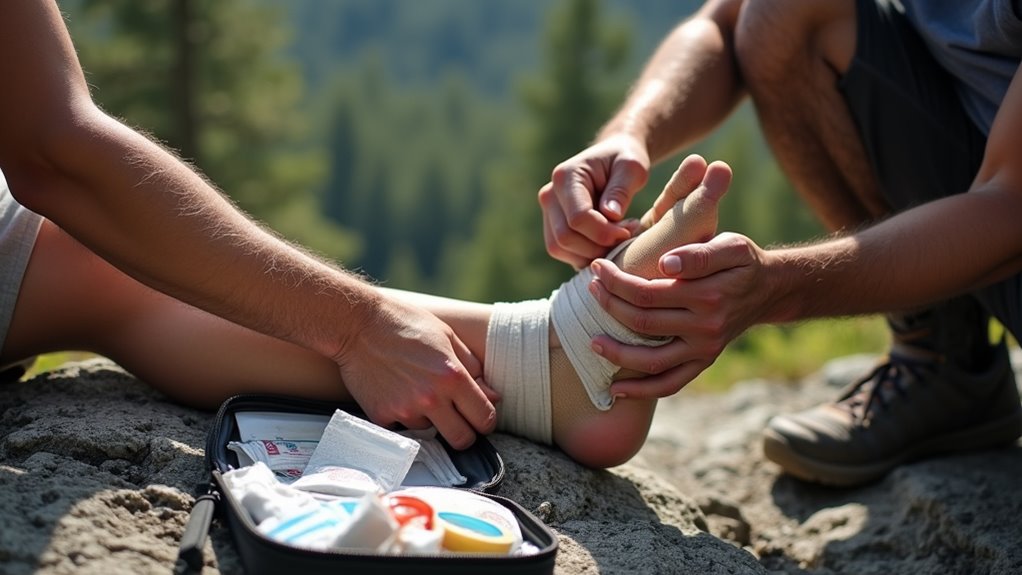
Even when you make smart decisions about turning back, accidents can still happen on the trail, and knowing how to respond could save a life—yours or someone else’s. Take a wilderness first aid course before hitting remote trails. You’ll learn to treat cuts, sprains, hypothermia, and heat exhaustion using limited supplies.
Practice splinting techniques and wound cleaning methods at home. Always carry a well-stocked first aid kit with bandages, antiseptic, pain relievers, and emergency blankets.
Know how to signal for help using whistles, mirrors, or your phone’s emergency features. Three sharp whistle blasts is the universal distress signal.
Download offline maps and emergency apps before you lose cell service. Most importantly, stay calm during emergencies—panic kills more people than injuries do. Proper preparation is just as crucial for hiking safety as it is for any camping adventure.
You’re not just being cautious—you’re being smart. Did you know that 65% of hiking emergencies could’ve been prevented with proper preparation? By following these nine safety strategies, you’re dramatically reducing your risk of becoming a statistic. Remember, there’s no shame in turning back when conditions aren’t right. The mountains will always be there tomorrow, but you need to be there to enjoy them. Stay prepared, stay flexible, and you’ll keep hiking for years to come.